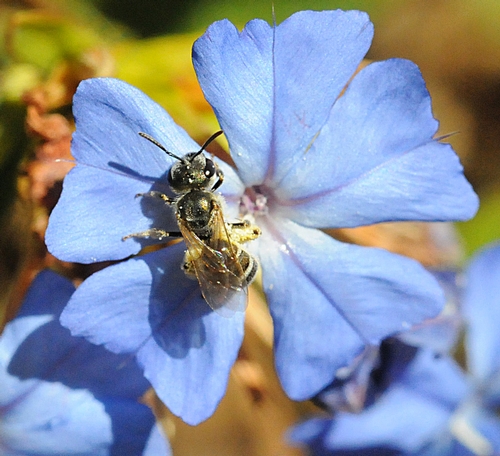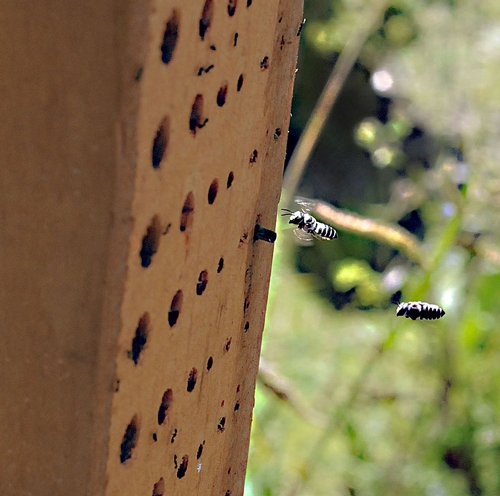Scientists have long been studying alternative pollinators, especially with the decline of the honey bee population and growing concerns about "How will we pollinate our crops?"
Now a newly published study in the Annals of the Entomological Society of America (ESA) shows that wild bees, which are not affected by Colony Collapse Disorder (CCD), may serve as alternative pollinators.
You've seen the tiny bees buzzing around on blossoms. At first glance, you may have mistaken them for honey bees. They're not.
Chances are you'll be hearing more about them, though.
ESA's communications director Richard Levine e-mailed us a press release today
reporting the results of a three-year scientific study that took place on 15 southwestern
Most species were from subfamily Halictinae (family Halictidae) and genus Andrena (family Andrenidae)
The journal article, titled "Wild Bees (Hymenoptera: Apoidea: Anthophila) of the Michigan Highbush Blueberry Agroecosystem," was authored by Julianna K. Tuell (
A quote from Tuell in the news release:
"This should help growers know what kinds of bees are in the fields so that they can make informed decisions about whether they should modify crop management practices in order to help conserve natural populations of bees."
"Untreated bamboo or reeds are good materials because they provide natural variation in hole diameter to attract the broadest range of species. There are also a number of commercially manufactured options that growers can use, such as foam blocks with pre-drilled holes and cardboard tubes made to a particular diameter to suit a particular species of interest. Drilling different sized holes in wood is another option. If a grower is interested in trying to build up populations of a particular species, there are also details about how to do so available online."
Good idea. On a tour of Yolo County farms last year, we saw many "bee condos," or nesting cavities, for the native pollinators. (See below). They're easy to make. Just like a baseball field attracts players, so will bee condos attract native pollinators. Build them and they will come.
(B
Attached Images:

Sweat bee

Bee condo